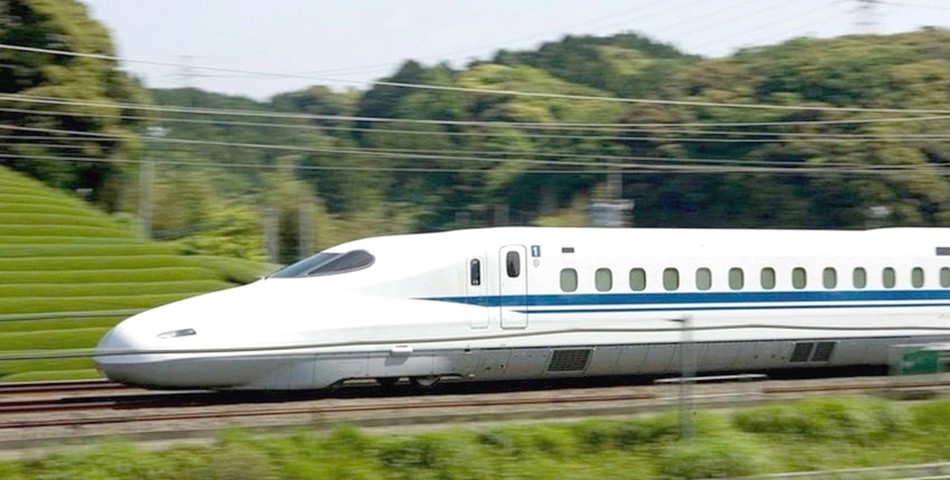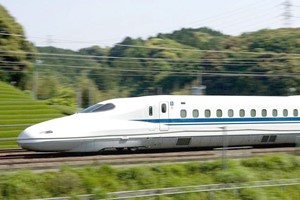Expediting this investment is crucial for maximizing the potential benefits, as the current national rail network in Vietnam lags behind those of neighboring countries in Southeast Asia, experts said.
While there is a unanimous agreement on the necessity of investing in the new railway system, divergent opinions exist regarding the optimal speed for the trains and whether priority should be given to express freight transportation or passenger services.
Speeding Into the Future At 350km Per Hour
The document submitted to the Ministry of Transport outlines three proposed plans for the national railway network in Vietnam, with Minister of Construction Nguyen Thanh Nghi expressing support for the third plan.
The third plan suggests a high-speed double-track railway with a speed capability of 350km per hour, a gauge of 1,435mm, and an axle load of 22.5 metric tons, primarily focused on passenger transportation but with provisions for freight transport. The estimated financial commitment for this plan is $68.98 billion, potentially escalating to $71.69 billion with additional investments for cargo transportation infrastructure.
The network includes 60% of its track as bridges, 10% as underground passages, and 30% as traditional railroad tracks, featuring 23 passenger stations, five maintenance and repair centers, 40 infrastructure maintenance facilities, five freight stations, four depots, and 28km of railways connecting stations for cargo trains.
The plan also allows for discussions on the first and second plans, which involve improvements to the existing North-South railway and the development of the North-South expressway into a double track, respectively. The first plan focuses on passenger transport with an investment estimate of $67.32 billion, while the second plan aims to serve both passengers and goods with an estimated investment of $72.02 billion.
Passenger Or Freight Priority?
Vietnam is at a crossroads as it plans to revolutionize its rail system, with experts offering diverse perspectives on whether to prioritize passenger or freight transportation.
Prof. Dr. Dang Dinh Dang, head of the School of Trade and International Economics, advocates for a pragmatic approach. He proposes upgrading and expanding the existing railway system to a double track with speeds ranging from 200-250km per hour. Emphasizing efficiency, he points to the extensive network of highways connecting regions in Vietnam, arguing that focusing solely on high-speed passenger trains might result in resource wastage.
On the other hand, Assoc. Prof. Dr. Tran Chung, former head of the national bureau overseeing construction quality, supports an ambitious plan for a new railway with speeds of 350km per hour. Aligned with the Communist Party's guidelines, he emphasizes the importance of cutting-edge technology to meet global standards. Chung envisions the high-speed track as a competitive alternative to air travel, with passengers experiencing efficiency akin to flights.
Prof. Dao introduces a new perspective, advocating for a multimodal approach. He proposes connecting the new North-South high-speed railway network with Chinese and Mongolian rails, potentially extending to European tracks. Dao stresses the importance of prioritizing both freight and passenger transportation. He cautions against exclusive emphasis on passengers, citing the existing railway network that could be upgraded for speed capabilities.
Dao argues against impractical massive investments solely for passengers, urging swift action to prioritize freight transport. He highlights the lagging state of Vietnam's rail compared to neighboring countries, particularly Laos.
As Vietnam navigates this decision, the debate revolves around optimal speed and the primary purpose of the new high-speed railway network. Whether to enhance the existing infrastructure or invest in a cutting-edge 350km-per-hour network remains a crucial decision for the future of transportation in the country.
Critical Reflection Encouraged for Multi-Billion-Dollar High-Speed Railway Project
As Vietnam contemplates the ambitious venture of constructing a new North-South high-speed railway network, the Ministry of Construction issues a note of caution, highlighting critical aspects that demand thorough deliberation. The ministry underscores a notable omission in the proposed project, specifically, a lack of clarity on the chosen track gauge for modernizing the existing railway network.
In alignment with global integration trends and to ensure future interoperability with international standards, the ministry suggests careful consideration of replacing the existing 1,000mm gauge with the widely accepted 1,435mm gauge. An additional crucial consideration pertains to the extensive nature of the North-South high-speed system, spanning a length of 1,545km and traversing 20 provinces and cities, many of which are actively engaged in provincial planning.
In light of this, the Ministry of Construction urges collaboration between the Ministry of Transportation and relevant provinces and cities. The goal is to maintain the original direction of the railway network, thereby averting the need for adjustments that could potentially entail additional costs.
This advisory from the Ministry of Construction underscores the necessity of meticulous planning and strategic collaboration to ensure the success and efficiency of a project of such magnitude and complexity.
Deputy Prime Minister Tran Hong Ha Endorses Vision for Modern And Integrated High-Speed Railway System
On October 18, the Government Office released a statement outlining Deputy Prime Minister Tran Hong Ha's position on the new high-speed railway project in Vietnam. Ha, who leads the project, expressed strong support for a modern and integrated rail system during the project's first management board meeting.
He directed the Ministry of Transport to involve technology and economic experts, including international specialists, to contribute valuable insights for the project's success. Emphasizing the need for diverse expert consultations, Ha highlighted the importance of building a cohesive North-South high-speed track meeting modern standards, with a targeted speed of 350 km per hour. This strategic approach, endorsed by the powerful Politburo, reflects Ha's determination to realize a cutting-edge and comprehensive high-speed railway system for Vietnam.











